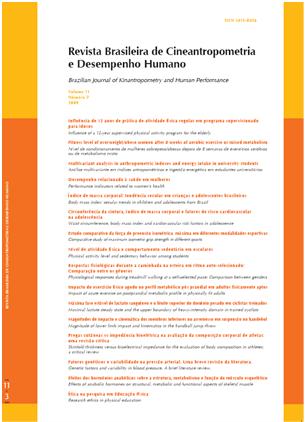Waist circumference, body mass index and cardiovascular risk factors in the adolescence.
DOI:
https://doi.org/10.1590/1980-0037.2009v11n3p286Abstract
Although several authors claim that the measure of the waist circumference (WC) is a more reliable cardiovascular risk factor index compared to body mass index (BMI) and other adiposity indicators, these results are not yet conclusive in exclusively pediatric population. The objective of this study was to compare the WC and BMI with risk factors for cardiovascular diseases in adolescents. The sample was composed by 108 boys and 133 girls (12 to 16 years). The WC and BMI were measured following usual anthropometric procedures. The risk factors for cardiovascular disease analyzed were blood pressure, total cholesterol, LDL-C, HDL-C and triglycerides. For statistical analyses we used descriptive statistics, chi-square tests and logistic regression, p < 0.05. On the BMI, the girls with increased values showed a higher odds ratio of showing undesirable blood pressure levels (OR: 4.29; CI95%:1.66-14.58). For WC, the girls with increased values showed greater odds ratio of presenting high blood pressure (OR:4.12; CI95%:1.27-13.35) and undesirable total cholesterol (OR: 3.6; CI95%:1.1-11.76). However the few relationships found, especially for boys, these anthropometric indicators can be useful for the identification and selection of individuals with increased values, enabling a intervention to the incorporation of healthy dietary habits and physical activity, especially in young individuals.



